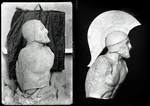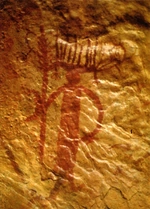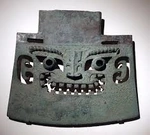Babylon, So legendary, As Mistificated
And here the place we should turning backward, to culture, already passed but under other angle.
Brief reminder:
❗ Sumerians — The Blueprint Civilisation. Timeline: ~4000–2300 BCE. Main Cities: Uruk, Ur, Lagash, Eridu, Nippur. Language: Sumerian (isolate, not Semitic).
- Innovation Level: unparalleled — the world’s first known systematized culture.
Key Achievements
- Writing: Cuneiform on clay tablets — enabling administration, contracts, measurements, astronomy. Mathematics: Invented the sexagesimal (base-60) system, which became the foundation for all Mesopotamian calculation. Metrology: Developed the first unified measurement system — for length, volume, and mass, including the Sumerian cubit (~0.497 m), mina, and shekel. Architecture & Surveying: Canal irrigation required precise geometry, giving rise to proto-engineering. Astronomy: Recorded celestial movements; early ziggurats were aligned astronomically.
Cultural Essence
- Sumerian worldview was technical and pragmatic — gods controlled nature, but humans controlled order.
That sense of order through measurement is the core legacy that Babylon inherited.
❗ Akkadian Empire — The Unifier. Timeline: ~2334–2154 BCE. Founder: Sargon of Akkad
- Language: Akkadian (Semitic). Significance: The first empire — merging Sumerian city-states under one crown.
Influence
- Adopted Sumerian science wholesale: cuneiform, mathematics, and metrology. Introduced Akkadian language administration — blending Sumerian numerals with Semitic grammar.
- Standardized weights and measures across Mesopotamia.
- Set the stage for later Babylonian governance — bureaucracy, archives, and codified law (early precedents of Hammurabi).

Old Babylonian Period — The Systematizers
As we have already seen, the Babylonian Kingdom did not arise in a vacuum — its very existence was shaped by historical inevitability. The following points will only emphasise these outcomes.
By the time of King Hammurabi of Babylon (r. 1792–1750 BCE), a well-developed linguistic model already existed — Akkadian, in its Babylonian dialect — which, under the king’s administration, was further refined and standardised for official use.
Under the king’s regulations, the so-called Code of Hammurabi was designed and promulgated. It served not merely as a legal text but also as a catalogue of standardised measures and values — covering grain, land, and labour.
The proto-scientific evolution of Babylonian thought led later generations to preserve and refine the Sumerian base-60 arithmetic, producing tables for squares, cubes, and reciprocals — a genuine form of proto-algebra, forming a structured body of knowledge for future advancement.
The metrological system, already well known by its names — Cubit (kuš) ≈ 0.497 m; Shekel ≈ 8.4 g; Mina = 60 shekels (≈ 504 g); Talent = 60 minas (≈ 30.2 kg); and the volume measures (gur, sila, ban) — formed the base units for grain and liquid trade.
Continuation of the Sumerian long-term celestial recordkeeping, but with systematisation for calendrical use.
A vast amount of our contemporary knowledge base about Sumerian civilisation is owed to Babylonian records.
Now Time Of Units?, So, Follow Us...
| Unit | Approx Equivalent | Notes / references |
|---|---|---|
| Cubit (kuš / ammatu / ammûtu) | ~ 0.50 m | In Neo-Babylonian texts the cubit is given ~ 0.5 m. |
| 1/24 cubit (šu-si / ubânû) | ~ 0.0208 m | As a fractional subdivision: cubit ÷ 24 ≈ 0.5 m / 24 ≈ 0.0208 m |
| gi / qânu (length unit = 7 cubits) | ~ 3.5 m | 7 × cubit (~0.5 m) = ~3.5 m |
| Length “GAR” unit (14 cubits) | ~ 7 m | 14 × cubit ≈ 7 m |
| System | Units & Conversion | Approx Area in m² |
|---|---|---|
| Reed (small units) | e.g. kuš × kuš etc. | e.g. 7 sq. cubits ~ 1.75 m² |
| Seed / larger system | e.g. ban, gur of area | e.g. gur area ≈ 13,500 m² |
| Unit | Ratio / Relation | Approx Metric Equivalent | Notes / references |
|---|---|---|---|
| Grain (še / uḫṭatu) | base very small unit | ~ 0.0000466 kg (≈ 46.6 mg) | Based on average of artefacts from Ur & Nippur |
| Shekel (šiqlu / gin₂) | 1 shekel = ~ 8.40 g | ~ 0.00840 kg | Standard in Mesopotamian tables |
| Mina (manû) | 60 shekels | ~ 504 g | 60 × 8.40 g = ~504 g |
| Talent (bītu / biltu / gun₂ / kakaru) | 60 minas | ~ 30.2 kg | 60 × 504 g = ~30.2 kg |
| Unit | Relation / Multipliers | Approx Metric Equivalent | Notes / references |
|---|---|---|---|
| sila₃ / qa | base volume unit | ~ 1 litre | The “sila” is often equated with about 1 L in Mesopotamian reconstructions. |
| ban₂ (sūtu) | 6 × sila | ~ 6 L | 6 × 1 L = 6 L |
| PI / pānu | 6 ban₂ = 36 L | ~ 36 litres | 6 × 6 L = 36 L |
| gur / kurru | 5 × PI = 180 L | ~ 180 litres | 5 × 36 L = 180 L |
These conversions are approximate — ancient measures varied over regions and epochs.
- Babylonian (Neo-Babylonian) systems often preserved and used older Sumerian standards.
- Volumetric capacity units often were tied to water weight equivalences, so a sila ≈ 1 litre is a standard working assumption.
This article is part of a long-read publication. [Go to the full version →]








This chapter devoted to two cultures, Babylonia and Persia, and here uncover why...






